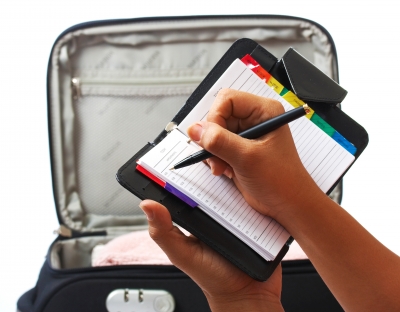If you are taking any type of diabetes medications, especially medications, such as insulin or sulfonylureas, are you letting your diabetes get in the way of you traveling more and seeing the world? I hope not. There is no need to let diabetes hinder your travel plans or have your travel plans be hindered by diabetes. With a little bit of planning ahead, your diabetes can be well managed during your travel excursions. Here are a few tips that can make traveling just a little bit easier and help you ease your mind, and thus also improve your blood sugars.
![]()
Always carry the following with you when traveling:
-
- A form of identification such as a Medic-Alert bracelet or necklace.
- A letter from your healthcare provider that explains you have diabetes and includes any related information: why you must carry insulin and syringes, your current medications, allergies, instructions in case of emergency.
- Hypoglycemia treatment in your pockets or purse, such as glucose tablets, gel or glucagon. Make sure your travel companion(s) know that you have diabetes and are aware of what to do in case of a hypoglycemic reaction. Advise them of your particular symptoms of hypoglycemia, so they can help if necessary. Teach them how to administer glucagon should you experience severe hypoglycemia. Never drive if hypoglycemia symptoms are present.
- Extra supplies in case you stay longer than planned (strips, glucometer/insulin pump batteries, control solution, syringes, sharps containers, lancets, ketone test strips, snacks to cover delayed meal times, medications.
- Prescriptions for medication and strips.
- Comfortable, well-fitting shoes to be worn at all times.
![]()
Before leaving for your destination:
-
- Obtain information on the local foods and drinking water.
- Be sure all of your immunizations are up-to-date.
- Learn about time zone adjustments, such as:
- if losing more than 2 hours, may need to take less insulin
- if gaining more than 2 hours, may need to take extra insulin
- if crossing more than two time zones, make a plan with your healthcare provider: a) remember to change the time on your insulin pump and b) you can change time of injections and meals by up to 2 hours in a day without adjusting doses.
- Have a plan for “sick days” and other emergencies.
![]()
When Traveling by Air:
-
- Carry snacks with you in case of a delayed flight or meal.
- If using insulin, keep it with you at all times. Insulin and testing supplies (including meter) will not be damaged by security scanners.
- Divide medications and testing supplies and pack them in more than one place in case a bag is lost. Always keep some on you at all times.
- Always keep insulin vials and pens in their original boxes/containers that show a pre-printed pharmaceutical label that identifies the medication.
- Carrying lancets that are capped and brought on with the glucose meter that has the manufacturer’s name embossed on the meter is generally acceptable.
![]()
Other important tips:
-
- Allow plenty of time so as not to rush and cause unwanted stress, which can lead to high blood glucose.
- Try to rest often while traveling and drink plenty of water if permitted.
- Walk while traveling to get in your needed activity.
- To avoid spoilage of insulin: keep insulin in a cool dry place, away from sunlight. In hot temperatures, keep in insulated bag or cooled thermos; in cold temperatures, keep close to your body or an insulated bag to keep it from freezing; insulin can be stored at room temperature for 30 days.
- Carry a First-Aid trip with you when camping or hiking.
- Avoid traveling alone, if possible.
![]()
ENJOY YOUR TRIP
Image courtesy of Stuart Miles / FreeDigitalPhotos.net








